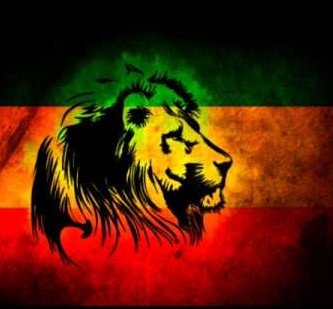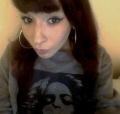You have no items in your cart. Want to get some nice things?
Go shopping Reggae music originates in the 1960s in a newly independent Jamaica. It developed as a mixture of Jamaican music (such as mento, nyabinghi and ska) and US genres (like rhythm’n’blues, jazz and soul). The lyrics tell day-to-day stories; they can have a political message or provide social commentary, or simply be a lively encouragement to have a good time. The best way to experience reggae is through sound systems: huge mobile discos that allow you not only to hear the strong bass-line, but to feel it shaking inside your body. Sound systems create a collective experience, allowing hundreds to attend a dance, have fun and, sometimes, take the mic and chat their own lyrics. Simply put, reggae and sound system culture also serve a social purpose.
Reggae music originates in the 1960s in a newly independent Jamaica. It developed as a mixture of Jamaican music (such as mento, nyabinghi and ska) and US genres (like rhythm’n’blues, jazz and soul). The lyrics tell day-to-day stories; they can have a political message or provide social commentary, or simply be a lively encouragement to have a good time. The best way to experience reggae is through sound systems: huge mobile discos that allow you not only to hear the strong bass-line, but to feel it shaking inside your body. Sound systems create a collective experience, allowing hundreds to attend a dance, have fun and, sometimes, take the mic and chat their own lyrics. Simply put, reggae and sound system culture also serve a social purpose.
The rise of sound system culture, in the Jamaican diaspora and beyond, has opened up a space for new audiences to engage with its music and its messages. This has lead to the birth of numerous local interpretations of the reggae themes of self-reliance and cultural pride. One place where reggae has become particularly important to people’s sense of self is in Salento, the south-eastern tip of the Italian boot. In the Italian collective imagination, Salento and reggae have become inextricably intertwined.
While reggae music wasn’t played on mainstream Italian radio stations, it found an enthusiastic audience and a space to express itself in the parties and pirate radios of the social centres. The political turmoil of the Seventies, the so called ‘years of lead’, had left many killed, imprisoned or hopelessly discouraged. In the early Eighties, as a response to this, left-wing Italian youths looked for new ways of expressing themselves. The answer for many became occupied and self-organised social centres and a culturally driven community approach to politics. More and more empty buildings were turned into lively centres for music, art and social events. Today, these occupied social centres are common across Italy; some are recent occupations, others (notably the Forte Prenestino in Rome or Officina 99 in Naples) have existed for decades. These centres became important to young migrants, including many Salentinians, who, armed with a train ticket and hope, had moved to the cities in search of work.
At the time, migrating up North was not easy. The far-right party Northern League was dominating the mainstream political landscape, winning electoral success with a racist, homophobic and anti-Southern narrative. The South of Italy has a history of being seen negatively by the rest of the country: often blamed for economic hardships and stereotyped as culturally backwards, it is seen as a problem rather than a resource. For the Northern League, the Padania region in the North was different from the Southern part of the country; the former was Celtic, the latter Mediterranean, the former had a strong sense of civic duty, the latter was prone to crime and idleness.
Amongst the Southern migrants looking for a new life up North was Salentinian chef Lu Papa Ricky (‘Daddy Ricky’), one of the founding fathers of Italian reggae. Lu Papa Ricky rose to prominence as a reggae artist in Bologna by performing at the social centre Isola del Kantiere. His lyrics focused on socio-political problems, with a particular attention to Salento. In the song ‘Emigrante’, he recounted the sorrows of those forced to leave, in ‘Lu Sole Mio’, a reggae version of the famous song ‘O’ Sole Mio’, he expressed nostalgia for the warm weather of his homeland.
Staying in Salento was not simple, either. The local mafia, the Sacra Corona Unita, was eager to take control of the territory: shootings were too common an occurrence in city squares. Many in the region found relief in the heroin sold by the mafia itself. If reggae is about finding hope in hopeless situations, about unity when fighting Babylon, it is not surprising it found fertile ground in one of the poorest and most neglected parts of the peninsula during a time of hardship.
For Nandu Popu, member of Salentinian dancehall sensation Sud Sound System, reggae was quite literally a life-saver. In an interview with Antonella Gaeta on Repubblica, Nandu Popu says: “[it was] a difficult time for us youth. There was a huge dispersion and dancehalls were our way of being together. Around us there was the Sacra Corona Unita, heroin, horrible things reggae has kept at arm’s length from us“.
The dancehall parties organised in abandoned countryside farms, social centres and public squares became the centre of this mini cultural revolution. Picture this: abandoned countryside farms, forgotten by everyone, became alive again. Hundreds – sometimes thousands – of young people forgot their woes (unemployment, drugs, poverty) and just danced till dawn. They danced to the sound of a music born miles away, in a Caribbean island they’ve never been to and, in all likelihood, will never have the chance to visit. But it resonated with them – and thanks to the loud bass of the sound system, it resonated in them, too. Dancehalls were not only metaphorically keeping people away from the mafia, they were quite literally offering an alternative space to use, putting a physical distance between youths and danger.
Given its origins in the experience of regional marginalisation and migration, it is perhaps not surprising that many artists in the scene choose to sing in their local dialect, rather than Italian. Don Ciccio from Love University Records, a Salentinian reggae record label, is one of them. His music and his radio show contribute to keeping Salentinian dialect alive. Speaking of the birth of the scene, Don Ciccio explains in the book ‘Dal Salento ai Caraibi’ by Tommaso Manfredi that “at the time, dialect was forbidden in the underground and in mainstream music. Especially for the generation who migrated to Milan, Rome, Venice or Bologna, it was a way of reclaiming one’s roots, a way of not feeling too far away from one’s homeland”.
Many artists in the Salentinian scene are also influenced by traditional Salentinian and Southern music, specifically Taranta and Pizzica. The duo Insintesi are a great example of this trend. To date, they have released two albums (‘Salento in Dub’, 2010 and ‘Fimmine in Dub’, 2012) which attempt to create a reggae dub response to traditional Salentinian music and Mediterranean world music.
The choice to mix traditional music is interesting. Similar to the role played by sound systems in Jamaica and in the UK, Salentinian folk music was a public event, around which entire villages gathered. Originally, this music had a therapeutic goal: it was practiced to cure people from the bite of venomous spiders. Through time, it became a more metaphorical cure, helping people forget their sorrows through dance and community. Terron Fabio, member of Sud Sound System, explains in the documentary ‘Pull it Up: An Italian Story’ that reggae is a direct continuation of these ancient traditions. “This thing of ours, this desire to dance”, he says “we took it directly from our own music, the pizzica pizzica, the traditional music that made our grandparents dance back in the days. Then that music stopped for a while and it was born again with reggae, because reggae is about roots and so it made us look for our roots, wherever these may be”.
Encouraged by reggae music to dive into their past, Salentinian artists found theirs in a vision of Southern Italy as a hybrid space, a fusion of different Mediterranean cultures, from Greece to North Africa. In the lyrics to the cross-over hit ‘Le radici ca tieni’ (The Roots You Have), Sud Sound System outlined quite clearly their hybridity (my translation):
If you don’t let go of the roots you have
You show respect even those from far away places
If you don’t forget where you’re from
You give more value to the culture you have;
We’re Salentinians, citizens of the world
Rooted with the Messapians, the Greeks and the Byzantines
Today, we’re united in our style with the Jamaicans.
Since the birth of the scene, reggae culture in Salento has kept growing. Today, it is not uncommon for Salento to be referred to as “the Jamaica of Italy”. As new artists keep emerging and some even manage to gain traction amongst a more mainstream audience (for example, Boom Da Bash), it is obvious that in Salento reggae will not fade away soon. New artists still embrace Salentinian culture and hybridity as foundations for their music and their ethics.
Amongst this newer generation is Ghetto Eden, a dancehall group composed of Salentinians Flavio and Giorgio and Senegalese migrants Khadim and Malick. In a recent interview for lacasadelrap.com, Ghetto Eden explained the name of their album ’Senegalentino’ as follows: “The name was born from our two lands, Senegal and Salento, two warm lands, rich in roots and culture. We are blending them together, through music in a mix of languages (Italian, English, French, Wolof and dialect)”.
This double push – to find one’s history and past, as well as to find one’s own voice and style with the help of new influences – characterises the Salentinian reggae scene. By embracing their Southern identity through the use of dialect and elements of traditional music and welcoming new cultural influences from the Caribbean, Salentinian artists have contributed to the creation of a new Salentinian identity: strongly local on the one hand, open to change and fusion on the other.

About Mira Peliti
Mira Peliti is based in London, but with her heart always in Naples. She lives for music, books and sunny days with friends.




